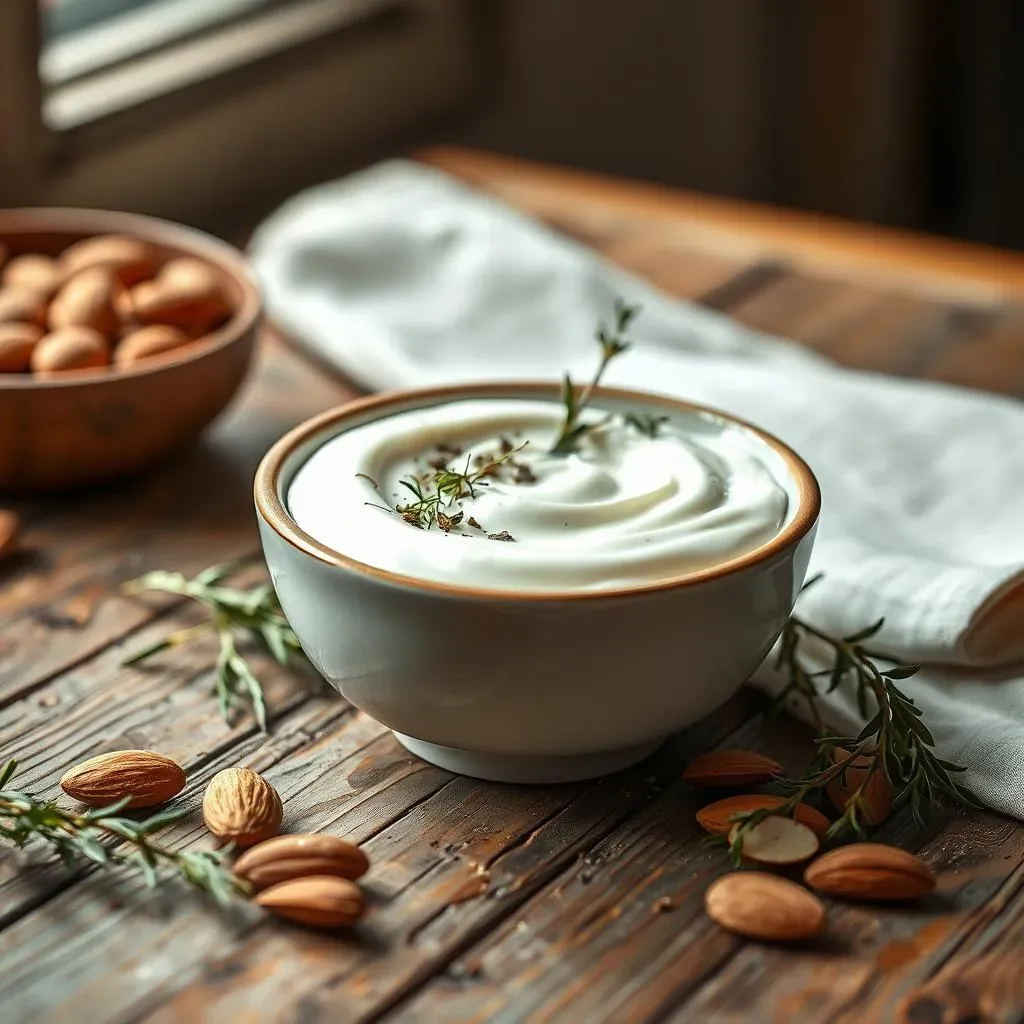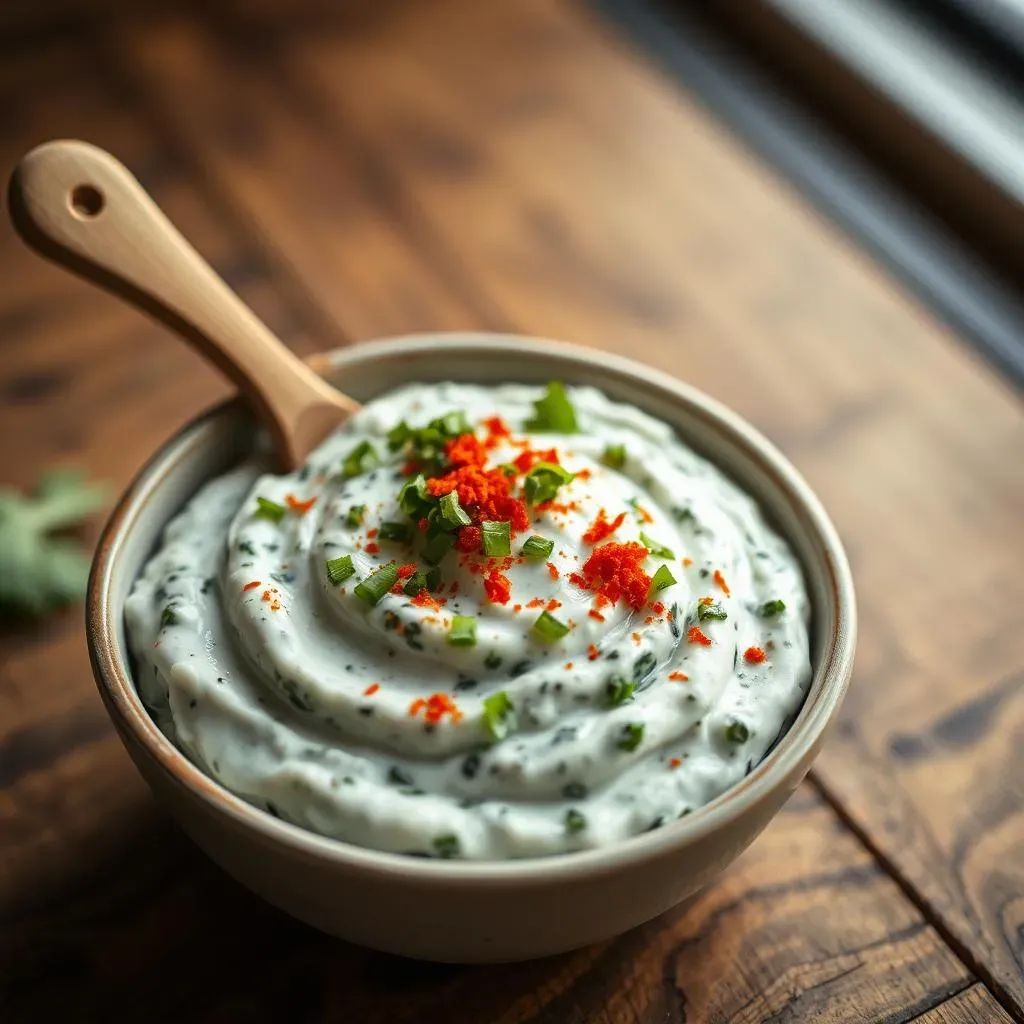Table of Contents
Ever found yourself mid-recipe, staring into the fridge, realizing you're out of sour cream? It's a kitchen crisis we've all faced! But fear not, there's a superhero lurking in the dairy aisle: Greek yogurt. This isn't just some random swap; it's a smart move, a delicious detour, and a fantastic sour cream substitute Greek yogurt option. We're not just talking about a simple one-to-one switch, though. This article will guide you through the ins and outs of using Greek yogurt as a sour cream stand-in. We'll explore why it works so well, how to use it in different recipes, and even what to expect in terms of taste and texture differences. You'll discover how to make this substitution work for you. So, whether you're health-conscious, a bit adventurous in the kitchen, or simply out of sour cream, get ready to unlock the secrets of using Greek yogurt as a stellar replacement. We'll cover everything from baking to toppings, and you’ll be a pro in no time!
Why Greek Yogurt is a Great Sour Cream Substitute

Why Greek Yogurt is a Great Sour Cream Substitute
So, you're wondering why Greek yogurt is such a champ in the sour cream substitute game? Well, it's not just because they both hang out in the dairy aisle. The real magic lies in their similar textures and tangy flavors. Greek yogurt, especially the full-fat kind, has this wonderfully thick consistency that mimics sour cream almost perfectly. This is thanks to the straining process it goes through, which removes a lot of the whey, leaving behind a creamy, dense product. That's why it doesn't make your dips or toppings runny like regular yogurt might. Plus, it has that signature tang that sour cream is known for, making it a pretty seamless swap in most recipes. It's not an identical twin, but it's a darn good cousin, offering a similar experience with a few extra perks. Think of it as sour cream, but with a protein boost and less fat – it's a win-win!
How to Use Greek Yogurt as a Sour Cream Substitute in Recipes

How to Use Greek Yogurt as a Sour Cream Substitute in Recipes
Alright, so you're ready to ditch the sour cream and embrace the Greek yogurt life? Awesome! It's not a complicated swap, but there are a few things to keep in mind. First off, for most recipes, you can do a straight 1:1 substitution. That means if your recipe calls for one cup of sour cream, just use one cup of Greek yogurt. Easy peasy. However, there are some nuances depending on what you're cooking. For dips and sauces, it's usually a perfect match. But when it comes to baking, you might notice a slight difference in the final product. Baked goods might be a bit lighter and less dense when you use Greek yogurt. But don't worry, this isn't a bad thing. It just means you might get a fluffier cake or a slightly less tangy biscuit. I've personally swapped it in everything from tacos to my grandma's potato salad and it has been a hit every time.
Now, here's a pro-tip: if you're using non-fat Greek yogurt, keep in mind that it might be a bit thinner than full-fat sour cream. This can affect the consistency of your dish. If you need it to be thicker, you can strain it a bit using a cheesecloth or a fine-mesh sieve. Just let it sit for a bit, and some of the excess liquid will drain out, leaving you with a richer, thicker yogurt. Also, if you're making something like a frosting, where the richness of sour cream is important, consider adding a touch of butter or cream cheese to your Greek yogurt to get a similar mouthfeel. It's all about playing around and figuring out what works best for your tastes.
Recipe Type | Substitution Notes |
|---|---|
Dips & Sauces | 1:1 swap, adjust seasoning to taste |
Baking | 1:1 swap, may result in lighter texture |
Frostings | Add a touch of butter or cream cheese for richness |
Toppings | 1:1 swap, consider straining for thicker consistency |
Greek Yogurt vs Sour Cream: Taste, Texture and Nutrition

Greek Yogurt vs Sour Cream: Taste, Texture and Nutrition
Taste Showdown
Alright, let's talk taste. Sour cream has that classic tangy, slightly acidic flavor that we all know and love. It's the kind of tang that makes your taste buds perk up. Greek yogurt, on the other hand, has a similar tang, but it's often a bit milder and sometimes has a slight milky undertone. I'd say that sour cream is more of a bold, in-your-face tang, while Greek yogurt is a bit more subtle and nuanced. Both have a delicious tang, but it's good to know the difference when you're swapping them in a recipe. Some people won't even notice the difference, while others will prefer one over the other. It's all about personal preference, really.
Texture Tango
Now, onto texture – this is where the real comparison happens! Sour cream is known for its smooth, thick, and almost velvety consistency. It's that perfect dollop that holds its shape on top of your baked potato. Greek yogurt, especially the full-fat version, does a pretty good job mimicking this. It's thick and creamy, but it might not have that same smooth, velvety finish as sour cream. Sometimes, Greek yogurt can be a bit more grainy, depending on the brand. But overall, they're both thick enough to be used interchangeably in most recipes. If you're after that super smooth texture, you can always give your Greek yogurt a good whisk before using it. This helps break down any graininess, making it even closer to the sour cream texture.
Feature | Sour Cream | Greek Yogurt |
|---|---|---|
Taste | Bold, acidic tang | Milder tang, slightly milky |
Texture | Smooth, thick, velvety | Thick, creamy, can be slightly grainy |
Nutritional Knockout
let's get into the nitty-gritty of nutrition. Sour cream, while delicious, is often higher in fat and calories. Greek yogurt, especially the non-fat or low-fat versions, tends to be lower in both fat and calories, making it a healthier option for many. But, and this is a big but, Greek yogurt is also packed with protein, which is great for keeping you feeling full and satisfied. It's also a good source of calcium. So, when you're choosing between sour cream and Greek yogurt, you're not just making a taste decision, but also a nutritional one. If you're trying to cut back on fat and calories, Greek yogurt is definitely the way to go. You get a similar taste and texture, with an extra boost of protein to boot. It's a win-win situation if you ask me.
Troubleshooting Your Sour Cream Substitute with Greek Yogurt

Troubleshooting Your Sour Cream Substitute with Greek Yogurt
My Dip is Too Thin!
so you swapped out sour cream for Greek yogurt in your famous spinach dip, and now it's looking a little... runny? Don't panic! This is a common hiccup, especially if you're using non-fat Greek yogurt. The key here is to remember that Greek yogurt, especially lower-fat versions, can have a higher water content than sour cream. The fix? You've got options! First, try straining your yogurt. Line a sieve with cheesecloth or a coffee filter, put the yogurt in, and let it sit in the fridge for a couple of hours. This will remove some of the excess liquid, giving you a thicker consistency. If that's not cutting it, you can always add a bit of cornstarch or arrowroot powder to the dip, just a teaspoon at a time, to help it thicken up. Remember, patience is key! Don't go dumping a whole bunch of thickener in at once, or you might end up with a gloopy mess.
My Baked Goods Are Too Dry
So, you decided to use Greek yogurt in your cake recipe, and now it’s a bit dry and crumbly? This can happen because Greek yogurt, while creamy, doesn’t have the same fat content as sour cream. Fat contributes to the moistness of baked goods, and without it, things can dry out. Don’t worry, you can easily fix this! The easiest solution is to add a little extra fat to the recipe. This can be in the form of a tablespoon or two of melted butter, oil, or even a touch of applesauce. Another trick is to add a bit of extra liquid, like milk or buttermilk, to the batter. This will help keep the baked goods moist. Remember to start with small additions and adjust as needed. Baking is a science, but it's also a bit of an art! Don't be afraid to experiment until you find the perfect balance.
Problem | Possible Solution |
|---|---|
Dip is too thin | Strain the yogurt, add cornstarch or arrowroot powder |
Baked goods are too dry | Add extra fat or liquid |
The Tang is Too Much!
so you've nailed the texture, but the tang of the Greek yogurt is just a bit too intense for your liking? I get it. Sometimes that Greek yogurt tang can be a little overpowering, especially if you're used to the milder flavor of sour cream. The good news is you can tone it down. One easy trick is to add a touch of sweetness to your recipe. A teaspoon of honey, maple syrup, or even a pinch of sugar can help balance out the tang. Another option is to mix your Greek yogurt with a bit of mayonnaise or cream cheese to mellow out the flavor. Just start with small amounts and taste as you go. Remember, cooking is all about finding the right balance of flavors, and sometimes it takes a little tweaking to get it just right. It's all part of the fun!
Wrapping Up Your Sour Cream Substitute Journey
So, there you have it. Greek yogurt isn't just a healthy breakfast option; it's a powerhouse in the kitchen, especially when you need a sour cream substitute Greek yogurt. From dips to desserts, this versatile ingredient can handle almost anything you throw at it. Remember, it might not be a perfect match in every single recipe, but with a little experimentation and the tips we've discussed, you can confidently swap out sour cream for Greek yogurt and still create delicious meals. Don't be afraid to play around with it, adjust to your taste, and discover new ways to use this handy substitute. Happy cooking!